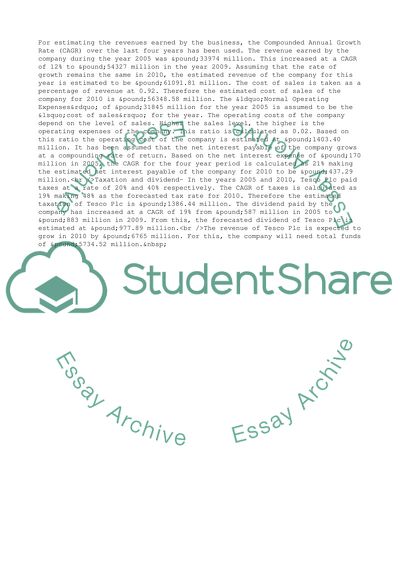Cite this document
(Financial Forecasting TESCO Plc Case Study Example | Topics and Well Written Essays - 1500 words, n.d.)
Financial Forecasting TESCO Plc Case Study Example | Topics and Well Written Essays - 1500 words. https://studentshare.org/business/1564868-financial-forecasting-tesco-plc
Financial Forecasting TESCO Plc Case Study Example | Topics and Well Written Essays - 1500 words. https://studentshare.org/business/1564868-financial-forecasting-tesco-plc
(Financial Forecasting TESCO Plc Case Study Example | Topics and Well Written Essays - 1500 Words)
Financial Forecasting TESCO Plc Case Study Example | Topics and Well Written Essays - 1500 Words. https://studentshare.org/business/1564868-financial-forecasting-tesco-plc.
Financial Forecasting TESCO Plc Case Study Example | Topics and Well Written Essays - 1500 Words. https://studentshare.org/business/1564868-financial-forecasting-tesco-plc.
“Financial Forecasting TESCO Plc Case Study Example | Topics and Well Written Essays - 1500 Words”. https://studentshare.org/business/1564868-financial-forecasting-tesco-plc.


